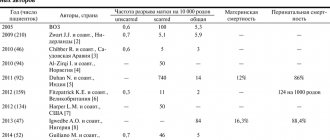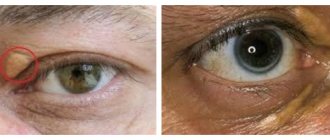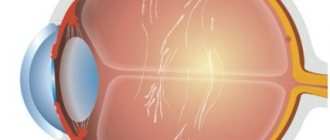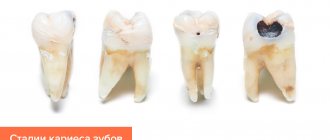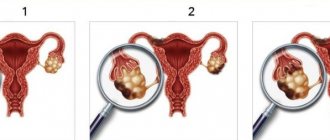Parasites
are organisms that use other living beings as a source of food or habitat, causing them harm. The word “parasite” is translated from Greek as parasite.
- Worms-Helminths
- Symptoms
- Diagnostics
- Treatment
- Our doctors
- Make an appointment
- Questions and answers
Parasites are very diverse. They can be microscopic or can reach several meters in length. Their habitats in the body are also different: intestines, liver, muscles, sometimes even the brain. In fact, parasites can live anywhere. If the parasite is worms (worms), the disease is usually called helminthiasis.
Uninvited “guests” of our body are dangerous for two reasons: they can both mechanically destroy organs and poison them with the products of their vital activity.
It is noteworthy that infection with parasites rarely leads to death. This is not surprising, because the parasite itself will die along with the host. Therefore, people can spend years being treated for a variety of ailments, attribute fatigue to a lack of vitamins, and allergies to poor ecology and heredity. But the cause of these problems may be a parasite that poisons the body. Not a single person in the world, regardless of his age and social status, can be protected from parasites entering his body.
General information
Helminthiasis is a common helminthic infection. The disease occurs everywhere, with a predominance in regions with humid and warm climates. It occurs at any age, but children aged 5–15 years are at risk. This is due to awareness of the environment, weak immunity against helminthic infestation (infection), and an insufficiently acidic stomach environment to destroy parasites. Helminths affect various organs, but their main habitat is the intestines.
The pathogen enters the body through the mucous membranes and skin, by ingesting the larvae and eggs of parasites with water and food. From swallowed mature eggs in the gastrointestinal tract, larvae emerge, which enter the blood through the intestinal mucosa and circulate throughout the body, affecting the liver, kidneys, gallbladder, heart, bronchi, and lungs. When coughing and swallowing saliva, the parasites again enter the intestines through the oral cavity, where they grow within 70–75 days and transform into a sexually mature individual.
From the moment of infection to the formation of a mature individual, 2–3 months pass. This time corresponds to the early intestinal stage. At the late stage, the body is already parasitized by adults. They live in the intestines for about a year and lay eggs, which are passed along with the feces.
Helminthiasis - a childhood disease?
Worms are often considered a childhood disease. The reason for this is that children often do not follow the simplest hygiene requirements: they do not wash their hands when coming from the street, after visiting the toilet or petting an animal, they eat dirty fruits and vegetables, and they may drink unboiled water. Kids, in addition, get to know the world by testing it by taste - they, as you know, put everything they can reach into their mouths. This is how parasite eggs enter the body.
The facts today are as follows: yes, children suffer from helminthiasis more often than adults. But this does not mean that advanced age is insurance against the penetration of worms into the body.
Causes of worms
Infection occurs through consumption of food and water that contains eggs of parasitic worms with mature larvae, or contact with soil contaminated with feces. Worms are transmitted from person to person through dishes, toys, clothes and shoes, household and toilet items.
The number of diseases increases due to insufficient hygiene rules after a walk, consumption of unwashed vegetables and fruits, dirty water, and insufficient heat treatment of meat or fish. Self-infection with worms is also possible.
Reference!
Worm eggs are brought by pets that are outdoors, on their paws and fur.
How to become infected with helminths: raw water, exotic cuisine and unwashed hands
You should not think that parasites live only in people who do not take care of themselves and lead an asocial lifestyle. Anyone can become infected, because a person is not immune from communicating with sick people and “parasite carriers”. Uninvited “guests” enter the body through food, water from pets, through dirty hands and insect bites.
Infection is encouraged by people buying homemade lard, raw meat, dried and smoked fish at unauthorized markets. You can become infected in a canteen or cafe if sanitary conditions are not met there. Undercooked meat and fish dishes are dangerous.
The parasites have also benefited from the passion for Japanese cuisine, where thermally unprocessed fish is added to dishes. Not all sushi bar chefs follow sanitation rules. As a result, a person becomes infected with helminths.
Types of worms
According to the way they exist in the external environment, helminth infections are divided into three groups:
- geohelminthiasis - develops in the soil without the participation of an intermediate host;
- biohelminthiasis is a prerequisite for existence - two or more organisms;
- contact helminthiasis - transmitted from person to person through household contact.
About 400 pathogens are known, of which several species parasitize the human body:
- Nematodes (roundworms): roundworms, pinworms, trichinella. They cause ascariasis, necatoriasis, enterobiasis, hookworm disease.
- Cestodes (tapeworms, tapeworms): bovine and pork tapeworms, broad tapeworms, echinococcus. Children with echinococcosis, hymenolepiasis, cysticercosis, taeniasis.
- Trematodes (flukes): liver fluke and cat fluke. Pathogens of opisthorchiasis, fascioliasis, clonorchiasis.
- Spinyheads (acanthocephalans): the giant acanthocephalan provokes acanthocephalosis.
Depending on the place of parasitism of the pathogen, helminth infections are divided into intestinal and extraintestinal - they parasitize the liver, kidneys, blood vessels, and gall bladder.
Symptoms of worms
Clinical manifestations of helminthiasis are varied and depend on the type, number of helminths and the organ in which they parasitize, age, and the state of the immune system. The disease has an acute course - from two weeks to two months, and a chronic course - up to several years.
In the acute period, signs of intoxication and allergies predominate:
- general malaise,
- chills,
- fever,
- skin itching and rash,
- enlarged lymph nodes,
- dry cough,
- dyspnea,
- abdominal pain,
- flatulence.
A specific manifestation of helminthiasis is bruxism (teeth grinding). When infected with parasitic worms, irritation of the anus and infections of the external genitalia may occur.
In the chronic phase, organ-specific lesions come to the fore. The most common clinical syndrome is indigestion:
- pain in the lower abdomen,
- loss of appetite
- nausea,
- belching,
- fast saturation,
- intolerance to certain foods,
- weight loss,
- unstable chair.
In the presence of worms in the liver and gall bladder, cysts, obstructive jaundice, and hepatitis occur. Roundworms provoke bronchitis, heart failure, myocarditis (inflammation of the muscular lining of the heart).
When the nervous system is invaded, a person becomes irritable, concentration decreases, it is difficult to tolerate moderate physical activity, and insomnia appears.
Against the background of helminthiasis, immune defense decreases, fungal and pustular skin lesions, caries occur, and the course of allergies and other concomitant diseases becomes more severe.
How to suspect a parasite infection
In the presence of external parasites (lice, scabies mites, demodex), skin itching occurs, worsening at night. Areas of irritation, redness, blisters, and pustules appear on the skin. Sometimes allergies occur and the temperature may rise.
When infected with helminths, the clinical picture varies, but in all cases there are digestive problems (diarrhea or constipation), anemia and weakness. People lose weight even with an increased appetite, some people’s taste preferences change - a person craves fatty, salty, etc. This is how the body tries to replenish the loss of vitamins and microelements caused by worm parasitism.
Helminth infections are accompanied by bloating, pain in various parts of the abdomen, itching around the anus. Sometimes, during bowel movements, the worms fall out of the anus or come out with feces. With severe infestation, vomiting occurs with the discharge of helminths. In a sick person, the liver and spleen become enlarged and pain occurs in the right or left hypochondrium.
With helminthiases, neurological manifestations caused by poisoning by waste products of parasitic creatures are common: insomnia, irritability, constant fatigue, bruxism (grinding teeth in sleep).
Parasites weaken the body, undermine the immune system, and cause allergies. Manifestations of bronchial asthma are often associated with the presence of helminths (pinworms, whipworms, echinococci).
Complications
In the absence of timely and adequate treatment, the larvae parasitize the body, affecting blood vessels, liver, kidneys, intestines, lungs, bronchi, which negatively affects their functionality and general condition.
The waste products of the larvae are toxic to the human body. When they accumulate, local allergic reactions, urticaria, bronchial asthma, and atopic dermatitis develop.
Helminths use proteins, vitamins, micro- and macroelements of the human body, which entails the risk of delays in the physical, mental and mental development of the child. This type of parasitic worms, such as hookworms and whipworms, consume human blood, causing anemia. Parasites suppress the immune system, reduce its resistance to infections, which is why colds and infectious diseases often occur.
Reference!
The presence of worms in the body reduces the effectiveness of preventive vaccines.
With mass infection, the risk of developing dysbacteriosis, partial blockage of the intestinal lumen and bile ducts increases, which can ultimately provoke an attack of appendicitis, intestinal obstruction, cholecystitis (inflammation of the gallbladder).
Diagnostics
If helminthiasis is suspected, the patient should be examined by a gastroenterologist, infectious disease specialist, parasitologist, therapist or pediatrician. When palpated, the liver, spleen, and lymph nodes are enlarged. The presence of parasites in the body can be determined by the results of a general blood test - the norm of leukocytes and eosinophils is exceeded, and the erythrocyte sedimentation rate is increased.
A more accurate diagnosis of helminthiasis is possible three months after infection, when the worms become sexually mature. For primary diagnosis and monitoring of treatment of the disease, laboratory methods are used:
- scraping to identify pinworm eggs from the anal area,
- examination of stool for helminth eggs,
- coprogram (advanced stool analysis to assess the functional activity of the gastrointestinal tract).
Biological material for research can be vomit, sputum, urine, skin biopsy (sampling a piece of skin), contents of the duodenum.
For intestinal helminthiases, allergy tests are informative. To identify damage to internal organs, instrumental diagnostic methods are used:
- chest x-ray;
- Ultrasound of the liver;
- CT scan of internal organs;
- colonoscopy (examination of the large intestine with a probe and camera);
- gastroscopy and esophagoscopy (examination of the internal organs of the gastrointestinal tract using an endoscopic device).
It is quite difficult to identify worms in humans, since egg laying occurs irregularly. To detect eggs, it is important to get into the period of maturity. Antibodies are present in the blood only for the first two months, after which they disappear from the bloodstream and concentrate in the intestinal wall. Diagnosis is also complicated by the variety of clinical presentations. Therefore, often the doctor is forced to make a decision on prescribing anthelmintic treatment based on indirect signs of helminthiasis.
How to identify dangerous parasites
It is impossible to identify and treat dangerous residents on your own, especially since they can exist in a complex and by eliminating some, you will only make room for others. Every clinic has a parasitologist; he is the one who treats infestations. If there is no such specialist, you can make an appointment with a therapist.
The doctor will prescribe a number of tests:
- Blood for clinical analysis. With helminthiases, an acceleration of ESR, a decrease in hemoglobin and an increase in the number of eosinophils are observed.
- Biochemical blood test for ALT, AST, alkaline phosphatase, thymol test, amylase. An increase in these indicators is typical for infection with nematodes.
- Analysis of bile, mucus, sputum, muscle tissue.
Worm infestations are often disguised as other diseases. People undergo operations during which they find a eaten away pancreas or liver. It is not always possible to cure a patient with an advanced form, so you should not hope for a miracle - you need to take the same test for “worm eggs” in a timely manner. To make a diagnosis, endoscopy of the intestines and stomach is prescribed.
Diseases caused by parasitic protozoa are difficult to detect. The infection proceeds latently and destroys the body until the patient exhibits serious organ changes.
Treatment of worms
To treat helminthic infestations, anthelmintic drugs are used. The choice of drug and the duration of the course are determined by the doctor, taking into account the type of parasitic worms and symptoms. Typically, antinematodes, antitrematodes, anticestodes, or broad-spectrum agents are prescribed.
Symptoms from the bronchopulmonary system are relieved with glucocorticosteroids, antihistamines, and antispasmodics. To restore intestinal microflora, probiotics are taken, and enzyme agents are taken to improve the digestion process. A cyst or abscess in the liver is removed surgically.
Two weeks and then a month after completion of therapy, a stool test for helminth eggs is taken three times. Patients at risk require periodic parasitological examination.
Reference!
If one of the family members is infected, only those who have indirect signs are treated.
